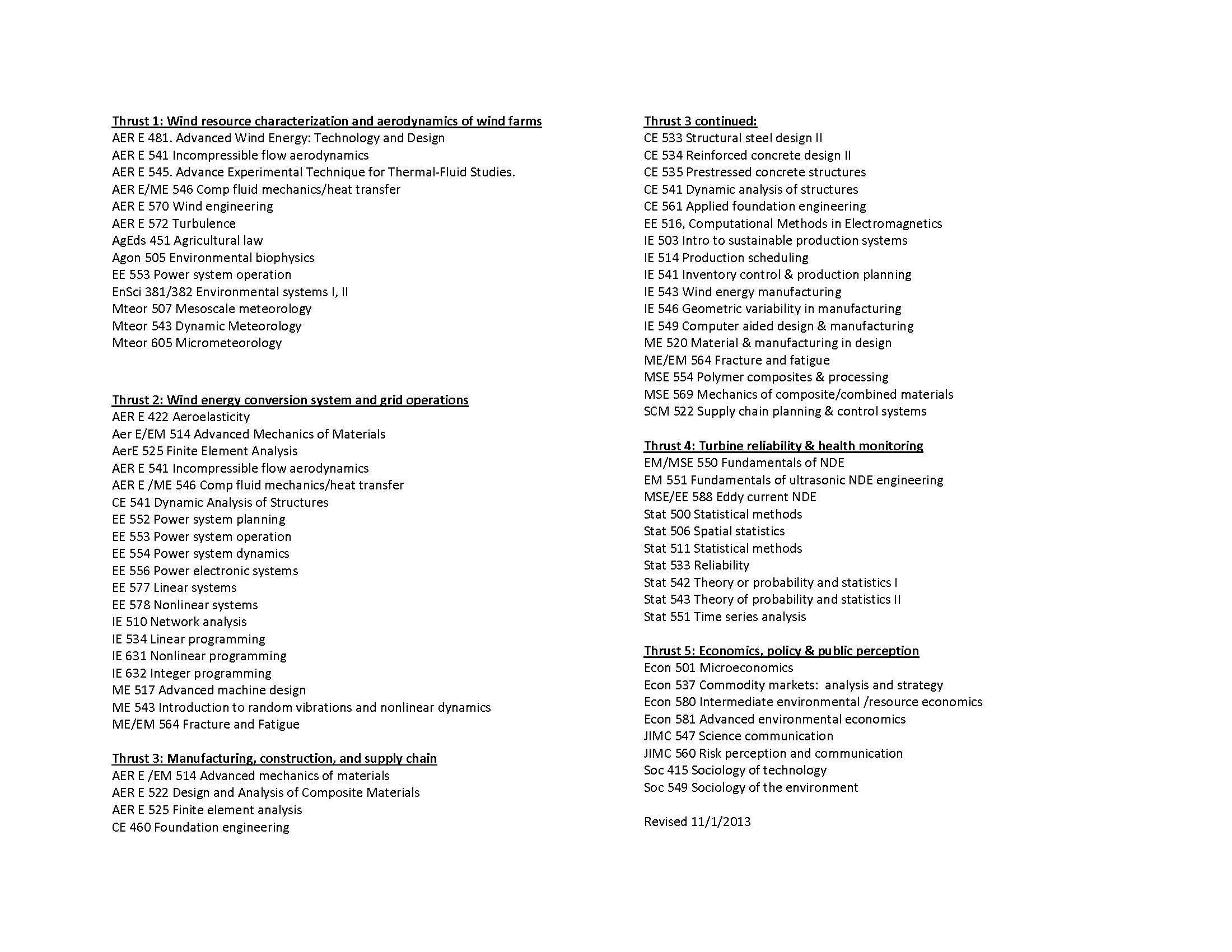The curriculum of the newly approved PhD degree program for WESEP, as part of our IGERT project: A new PhD Program on Wind Energy Science, Engineering and Policy (WESEP), includes courses that are classified as “introductory”, “core” and “specialization”. While the introductory courses are designed to cover the “breadth” and specialization courses are designed to cover the “depth”, the core courses are offered to cover both “depth and breadth” in the field. An overview of the curriculum is provided in Fig. 1 below.
Fig. 1: WESEP curriculum overview
Students are required to take the 1 credit course WESEP 594 every semester, which is referred to as a “real-time research collaborative.” This course addresses cognitive approaches to research while taking students through the full research cycle, including proposal writing, problem solution, and publication, via a team-based approach. WESEP 594 also addresses leadership principles, ethics, and communications.
There are two introductory and interdisciplinary courses, WESEP 501 Wind Energy Resources and WESEP 502 Wind Energy Systems, that comprise the Level 1 part of the curriculum. Students have to take these courses at the beginning of their degree program. These are new courses that are developed as part of the curriculum.
This is followed by the Level 2 part of the curriculum where a total of 8 core courses are required, 4 core courses from a “major” thrust area, 3 core courses from a “secondary” thrust area, and at least one course from Thrust area 5.
The list of 5 thrust areas follow – (1) Wind Resource Characterization and Aerodynamics of Wind Farms, (2) Wind Energy Conversion System and Grid Operation, (3) Manufacturing, Constuction and Supply Chain, (4) Reliability and Health Monitoring, and (5) Wind Economics, Policy and Public Perception. These courses will provide the students disciplinary depth while providing interdisciplinary breadth. Students can take additional courses within the other thrust areas as needed for their research, but the requirement ensures students are research-capable at least in 2 thrust areas. All core courses with the exception of a few are existing ISU courses that are offered by several departments. These core courses are listed below.
Fig. 2: Level 2 core courses
It is not expected that Thrust area 5 would serve as the primary research area for any students but it may well serve as the secondary research area. When a student chooses Thrust area 5 as the secondary research area, then the eighth core course should be selected from one of Thrust areas 1-4.
Students are required to take one out of the two “specialization” courses, namely, WESEP 511 Wind Energy System Design and WESEP 512 Wind Energy System Deployment. These are new courses that are being developed.


